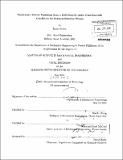| dc.contributor.advisor | Wai K. Cheng. | en_US |
| dc.contributor.author | Dimou, Iason | en_US |
| dc.contributor.other | Massachusetts Institute of Technology. Dept. of Mechanical Engineering. | en_US |
| dc.date.accessioned | 2011-12-19T18:50:07Z | |
| dc.date.available | 2011-12-19T18:50:07Z | |
| dc.date.copyright | 2011 | en_US |
| dc.date.issued | 2011 | en_US |
| dc.identifier.uri | http://hdl.handle.net/1721.1/67777 | |
| dc.description | Thesis (Nav. E. and S.M.)--Massachusetts Institute of Technology, Dept. of Mechanical Engineering, 2011. | en_US |
| dc.description | Cataloged from PDF version of thesis. | en_US |
| dc.description | Includes bibliographical references (p. 81-83). | en_US |
| dc.description.abstract | In an effort to build internal combustion engines with both reduced brake-specific fuel consumption and better emission control, engineers developed the Direct Injection Spark Ignition (DISI) engine. DISI engines combine the specific higher output of the spark ignition engine, with the better efficiency of the compression ignition engine at part load. Despite their benefits, DISI engines still suffer from high hydrocarbon, NO2 and particulate matter (PM) emissions. Until recently, PM emissions have received relatively little attention, despite their severe effects on human health, related mostly to their size. Previous research indicates that almost 80% of the PM is emitted during the first few minutes of the engine's operation (cold-start-fast-idling period). A proposed solution for PM emission reduction is the use of fuel blends with ethanol. The present research experimentally measures the effect of ethanol content in fuel on PM formation in the combustion chamber of a DISI engine during the cold-start period. A novel sampling system has been designed and combined with a Scanning Mobility Particle Sizer (SMPS) system, in order to measure the particulate matter number (PN) concentration 15 cm downstream from the exhaust valves of a DISI engine, for a temperature range between 0 and 40"C, under low load operation. Seven gasohol fuels have been tested with the ethanol content varying from 0% (EO) up to 85% (E85). For E10 to E85, PN modestly increases when the engine coolant temperature (ECT) is lowered. The PN distributions, however, are insensitive to the ethanol content of the fuel. The total PN for EQ is substantially higher than for the gasohol fuels, at ECT below 20'C. However, for ECT higher than 20'C, the total PN values (obtained from integrating the PN distribution from 15 to 350 nm) are approximately the same for all fuels. This sharp change in PN from EQ to E10 is confirmed by running the tests with E2.5 and E5; the midpoint of the transition occurs at approximately E5. Because the fuels' evaporating properties do not change substantially from EQ to E10, the significant change in PN is attributed to the particulate matter formation chemistry. | en_US |
| dc.description.statementofresponsibility | by Iason Dimou. | en_US |
| dc.format.extent | 83 p. | en_US |
| dc.language.iso | eng | en_US |
| dc.publisher | Massachusetts Institute of Technology | en_US |
| dc.rights | M.I.T. theses are protected by
copyright. They may be viewed from this source for any purpose, but
reproduction or distribution in any format is prohibited without written
permission. See provided URL for inquiries about permission. | en_US |
| dc.rights.uri | http://dspace.mit.edu/handle/1721.1/7582 | en_US |
| dc.subject | Mechanical Engineering. | en_US |
| dc.title | Particulate matter emissions from a DISI engine under cold-fast-idle conditions for ethanol-gasoline blends | en_US |
| dc.title.alternative | Particulate matter emissions from a Direct Injection Spark Ignition engine under cold-fast-idle conditions for ethanol-gasoline blends | en_US |
| dc.type | Thesis | en_US |
| dc.description.degree | Nav.E.and S.M. | en_US |
| dc.contributor.department | Massachusetts Institute of Technology. Department of Mechanical Engineering | |
| dc.identifier.oclc | 767584684 | en_US |
